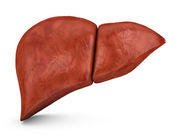Ballooning/inflammation at liver biopsy linked to increased plasma branched chain, aromatic AAs
WEDNESDAY, Aug. 16, 2017 (HealthDay News) — In non-alcoholic fatty liver disease (NAFLD), increased plasma amino acid (AA) concentrations are observed, according to a study published online Aug. 12 in Hepatology.
Melania Gaggini, from the Institute of Clinical Physiology in Pisa, Italy, and colleagues examined whether individuals with NAFLD non-obese (NAFLD-NO) versus obese (NAFLD-Ob) had altered plasma AAs compared with controls, and whether concentrations correlated with insulin resistance (IR) and liver histology. The authors measured AA profile in NAFLD subjects with liver biopsy, without diabetes (29 NAFLD-NO and 15 NAFLD-Ob), and 20 non-obese controls.
The researchers found that most AAs were increased only in NAFLD-Ob. Compared with controls, only alanine, glutamine, isoleucine, and valine, but not leucine, were increased in NAFLD-NO. There were correlations for glutamate, tyrosine, and glutamate/(serine+glycine) (GSG-index) with hepatic-IR. Independently of body mass index (BMI), GSG-index correlated with liver enzymes, in particular gamma glutamyl transferase. There were associations for ballooning and/or inflammation at liver biopsy with increased plasma branched chain AAs and aromatic AAs, and mild associations with GSG-index; in this cohort, only the new GSG-index was able to discriminate fibrosis F3 to 4 versus F0 to 2.
“Increased plasma AA concentrations were observed mainly in obese NAFLD, likely as a consequence of increased IR and protein catabolism,” the authors write. “The GSG-index is a possible new marker of severity of liver disease independently of BMI.”
Copyright © 2017 HealthDay. All rights reserved.








